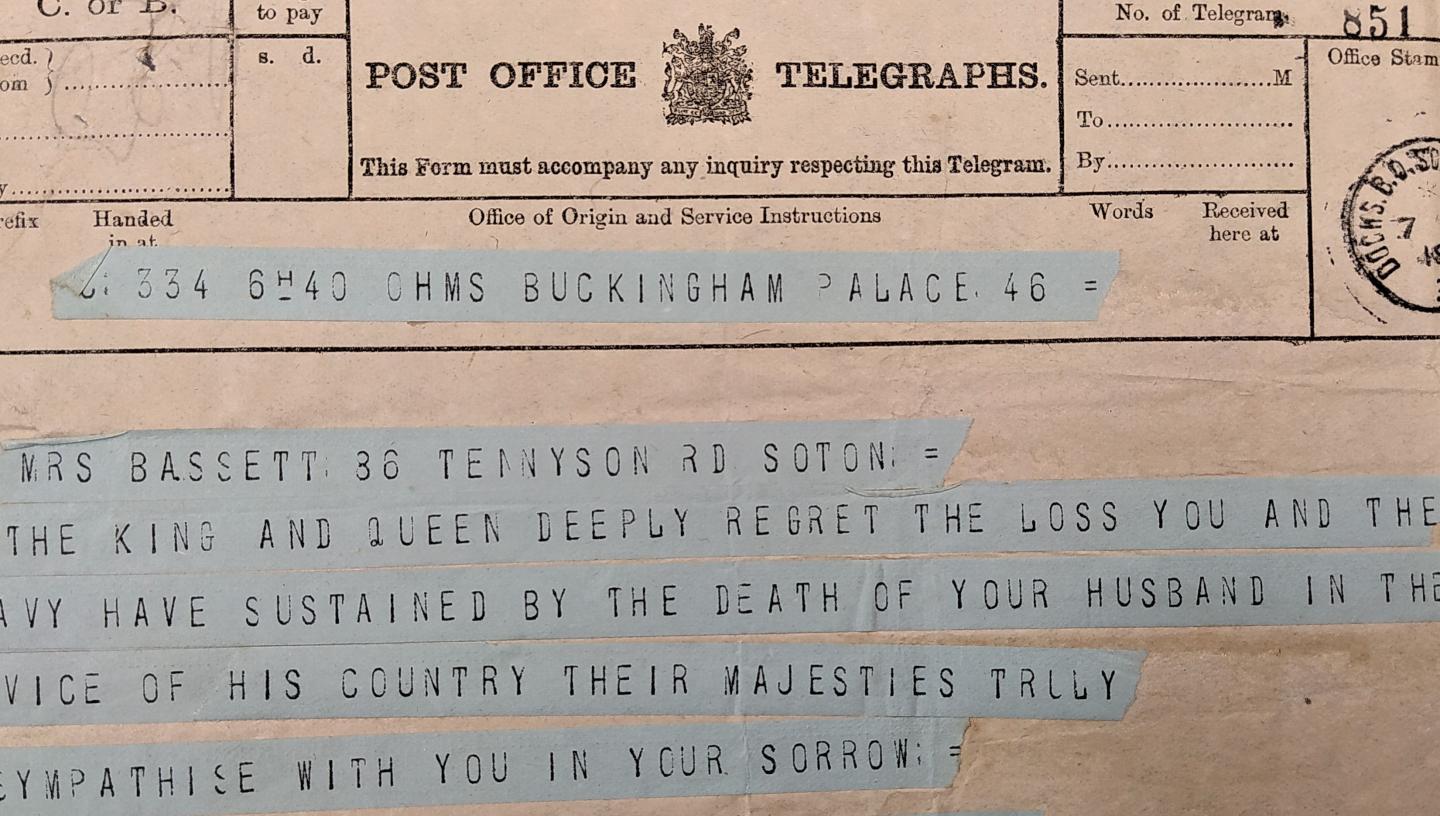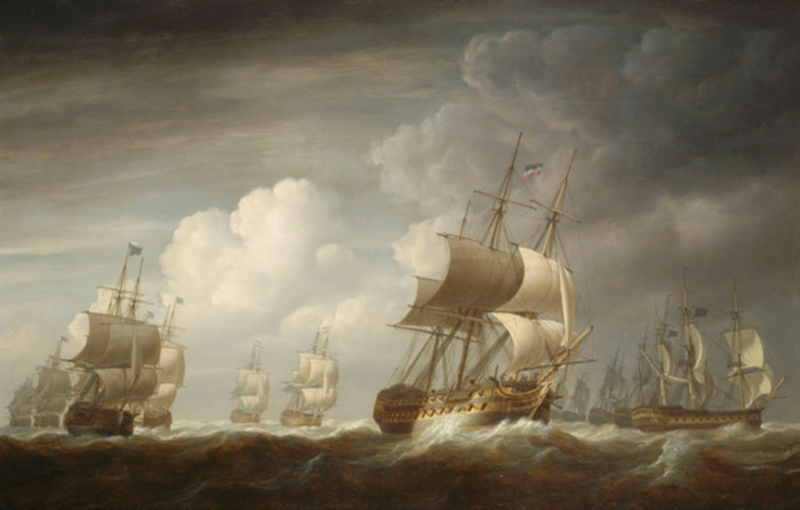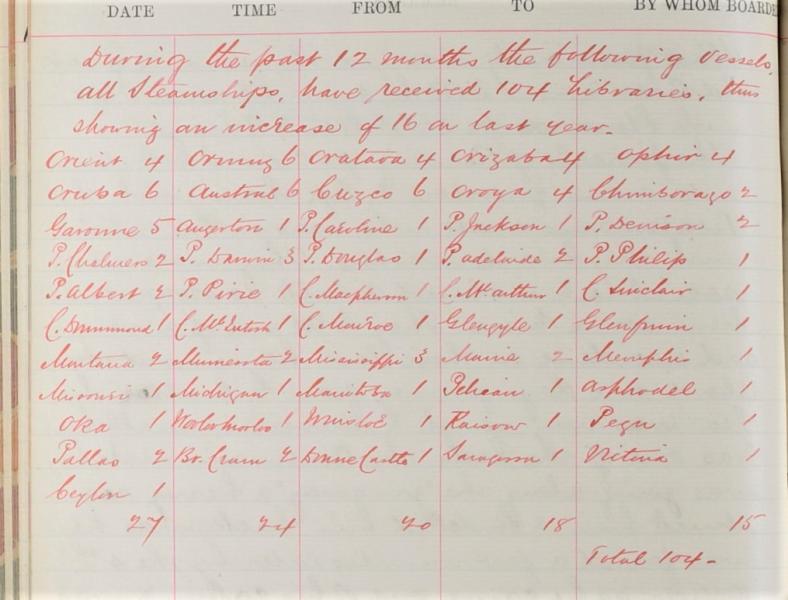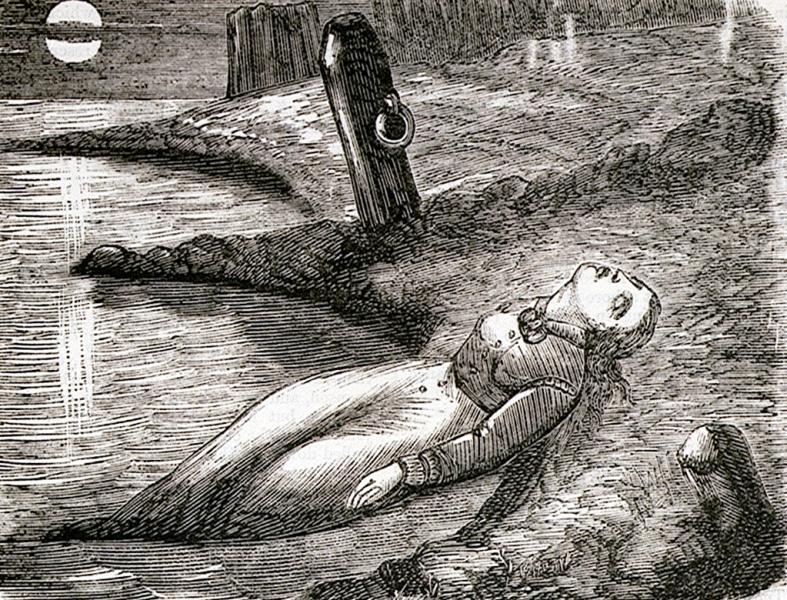
In this blog we look at some examples of the various and evolving sources of financial aid for the dependants of naval seamen who died in service, from the mid-19th to mid-20th century, using documents found in three small manuscript collections of naval seamen
Although the official records of the Royal Navy are held at The National Archives, many personal papers related to naval seamen of all ranks are found in the National Maritime Museum’s archives. In particular, documents concerning financial assistance for the family of naval seamen who died in service can highlight both the loss of life and the plight of those left behind.
There have been various sources of financial relief for the dependants of naval seamen over the years, and documents from the three manuscript collections shown below, spanning a period from the mid-nineteenth to mid-twentieth century, highlight some of these sources and illustrate how pension provision evolved from a somewhat informal and piecemeal affair to an official, government-run system.
The archives hold a small collection of the papers relating to the naval service of Samuel Holmes who served from 1804 to 1835, reaching the rank of superannuated gunner (RMG ID: ADL/Z/7). When he died in 1837 he was survived by his wife, Anne (née Folds), whom he had married in 1822.
A letter to Anne reveals that she was entitled to a pension of £25 per year to be paid quarterly by H.M. Paymaster-General. Using The National Archives’ currency converter, this sum can be estimated to have a modern-day value of roughly £1,500. The role of Paymaster-General had just recently been established following the amalgamation in 1835 of the offices of the Paymaster General of the Forces, the Paymaster and Treasurer of Chelsea Hospital, the Treasurer of the Ordnance, and the Treasurer of the Navy.
William Ashmore was born in 1847, and a small collection of his papers was added to the archives in 1964 (RMG ID: ADL/Z/4). He was employed as the servant to Captain Burgoyne on board HMS Captain, part of the Channel Squadron off Cape Finisterre, when it capsized and sank in bad weather on 7 September 1870. All but 18 of the crew died, including Ashmore. This infamous event was ultimately judged to be the result of poor ship design.
The collection of Sir Alexander Milne, who was Commander-in-Chief of the Mediterranean Squadron at the time of the sinking, features a series of papers relating to the loss of the Captain, including the court martial (RMG ID: MLN/161). Ashmore was survived by his wife, Annie (née Murch), whom he had married in 1868, and their two baby daughters, Mary and Bessie.
Ashmore’s papers show that his widow Annie received financial aid from several sources. A letter dated 15 October 1870 from the Accountant-General of the Navy and Comptroller of Navy Pay informed her that she had been granted a gratuity out of Greenwich Hospital Funds, equal to one full year of her late husband’s wages. This amounted to £24.6.8 (24 pounds, six shillings and eight pence).
Greenwich Hospital was established in 1694 as a home for old and sick seamen, and it also issued small out-pensions to eligible seamen and their dependants. Its sources of funding included a deduction from seamen’s wages and unclaimed prize money. The Hospital in fact continued to pay out pensions after it stopped admitting in-pensioners and closed in 1869.
Annie received another letter from the Admiralty confirming a payment from the Royal Bounty Fund, equal to six months’ pay of her late husband. The letter sent to Annie stipulated that payments will be made to widows ‘provided they are not remarried and are of good character’.
Annie was also invited to apply for a share of funds being raised by mess stewards and cooks serving in the Royal Navy for the dependants of those who died in the Captain. A letter she was sent in December 1870 advised her to submit a statement of her circumstances, including the number of her children, signed by the minister of her parish.
A year later, in December 1871, Annie was notified by the Royal Commission of the Patriotic Fund that she had been granted a small weekly allowance from the 'Captain' relief fund of five shillings for herself and three shillings and six pence for her children, as of 1 January 1872.
The Royal Patriotic Fund was established in 1854 at the behest of Queen Victoria, initially to raise funds for the relief of the dependants of servicemen killed in the Crimean War. Distribution of the money raised through public donations was administered by regional commissioners.
Commander Thomas Arthur Bassett was born in Southampton in 1875, and the collection of his papers include his master’s certificate of competency from 1901, and his certificate appointing him a sub-lieutenant in the Royal Naval Reserve in 1905 (RMG ID: BGY/B/10/2).
In April 1918 he wrote to the Admiralty requesting that he be considered for promotion to the rank of acting captain but, later that year, on 29 September, he died at Haslar Hospital in Portsmouth following an accident on board a ship. A letter from the Admiralty to his widow Helen revealed that he suffered a cerebral concussion, pericarditis and pneumonia.
Helen also received a telegram of condolence from Buckingham Palace. According to details gleaned from the Ancestry website, Helen was born in 1881 in Calcutta (now Kolkata), and she and Thomas got married in 1908, in Madras (now Chennai).
In January 1919 Helen received notification from the Ministry of Pensions that she had been awarded a pension of £200 per year as ‘the widow of a Commander who died of injuries in performance of duty’. This sum can be given a modern-day value of roughly £5,800.
The Ministry of Pensions was established in 1916 to provide a single department to administer war pensions for servicemen in the armed forces. Previously, the Admiralty had been responsible for Royal Navy pensions, and Army Council and the War department for British Army pensions.
In June 1919, Helen applied for an ‘Alternative Pension’, which was awarded in August 1920 and entitled her to an increased rate of £242.10.0, a sum that was revised to £300 in October 1921. A memorandum included in this collection (Form 543) explains that a widow who was married to an officer before the start of the war could be granted an alternative pension based on her late husband’s pre-war earnings.
Several years later Helen applied for an improved war pension, but she received a reply from the Ministry of Pensions and National Insurance in 1957 pointing out that the discontinued alternative pension scheme used to calculate her rate of £300, was more generous than the standard rate at that time of £262.
The Ministry of Pensions and National Insurance was created in 1953 by merging the Ministry of Pensions with the Ministry of National Insurance, which had been established in 1944.







